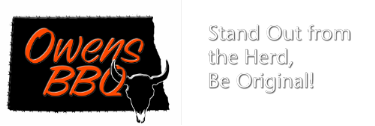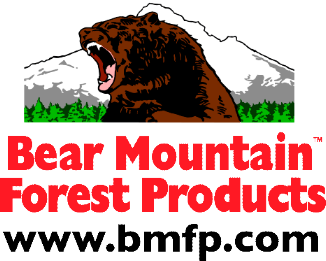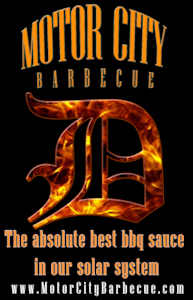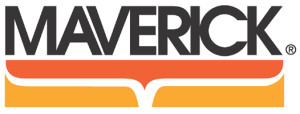
|

|
|
|
The following are some turkey tips I have researched
and adopted as best practices when processing turkey
or any poultry for that matter. That said the target
audience are those interested in Smoking or frying a
turkey. Keep in mind you don't have to wait until
Thanksgiving to enjoy turkey. Turkey is readily
available year round and makes for some excellent
diners and sandwiches for lunch.
The "Danger Zone"
No, I'm not referring to the theme song from Top
Gun… I'm referring to the food danger zone or when
the outer layer of food is between 40 º F and 140 º
F where foodborne bacteria multiply rapidly. Failure
to comply may result in forms of food poisoning such
as Salmonella.
Thawing
The following are the three safe thawing
methods.
Refrigerator Thawing
Refrigerator temp should be kept at 40 º F or below.
Plan ahead allow approximately 24 hours for each
4 to 5 pounds in the refrigerator.
The turkey
should be contained in a pan or container to avoid
any juices from dripping onto any other foods or the
shelf for that matter.
Thawing Time
4
to 12 pounds - 1 to 3 days
12 to 16 pounds - 3 to
4 days
16 to 20 pounds - 4 to 5 days
20 to 24
pounds - 5 to 6 days
Once thawed, your turkey
can remain refrigerated for two days.
Cold
Water Thawing
Place your turkey in a leak
proof plastic bag. This will prevent cross
contamination and prevent the turkey from absorbing
water. Amazon sell giant Ziploc bags that work great
for this and can be used for brining the turkey
once it has thawed.
Submerge the turkey in cold
tap water. Change the water every 30 minutes until
turkey is thawed.
Allow about 30 minutes per
pound. Multiply the weight * .5 (1/2 hour)
Turkey
thawed by the cold water method should be cooked
immediately.
Thawing Time
4 to 12
pounds - 2 to 6 hours
12 to 16 pounds - 6 to 8
hours
16 to 20 pounds - 8 to 10 hours
20 to 24
pounds - 10 to 12 hours
Microwave Thawing
Yes, that's right. USDA says you can use the
microwave to thaw your turkey. The USDA does not
provide any additional information with the
exception of stating and I quote…
"Follow
the microwave manufacturer's instructions when
defrosting a turkey. Plan to cook it immediately
after thawing because some areas of the food may
become warm and begin to cook during microwaving.
Holding partially cooked food is not recommended
because any bacteria present wouldn't have been
destroyed."
I don't know about you but I
have formed an opinion that microwave thawing allows
for too many variables that could potentially lead
to issues with bacteria. I therefore do not
recommend using this method and will go as far as to
suggest you avoid using the microwave to thaw your
turkey. This is my personal opinion.
USDA
Reference:
http://www.fsis.usda.gov/wps/portal/fsis/topics/food-safety-education/get-answers/food-safety-fact-sheets/poultry-preparation/turkey-basics-safe-thawing/CT_Index
There are two
types of brines. Phosphate based and Saline based.
The phosphate based brines penetrate deeper pulling
in more moisture and flavor. The saline based brines
rely on salt to penetrate pulling in moisture and
flavor. I personally prefer phosphate based brines
as they penetrated better and you have less of an
issue of over salting the meat. When brining you,
use the Ziploc Big Bags instead of a cooler or large
pot to brine in. You will require less liquid to
cover the Turkey. See the video below for a
demonstration.
Stuffing - Stuff or not stuff?
If your
cooking low and slow at temperatures lower than 325
º F do not stuff the turkey.
Check not only the
center of the turkey meat but also the center of the
stuffing. If the internal temp of either the turkey
or stuffing has not reached 165 º F then further
cooking is required.
Let the turkey rest
Should you choose to continue with stuffing your
turkey, visit the
USDA's food safety page on Turkey
Basic's - Stuffing
Cooking the Turkey
I will cover only the
two main outdoor cooking methods - Smoking and Deep
frying.
Smoker
Completely thaw the
turkey before cooking.
Have a reliable food
thermometer handy to measure the internal temp of
the turkey meat.
Have a reliable thermometer
measuring the temp of your smoker.
Thoroughly
clean the smoking or cooking grates.
Place smoker
where it's shielded from winds to aid in maintaining
a consistent temp.
Pre-heat your cooker to a temp
within the range of 225 º F to 300 º F.
Once
preheated, I recommend spraying the grates with hot
water as the water will steam and allow you to
easily remove any residual buildup from previous
use.
Smoke using only hardwoods. Avoid soft
woods (pine, fir, cedar etc.) as it will coat your
food with resin from the pitch.
Don not cook a
stuffed turkey at temps lower than 325 º F.
Cooking time is approximately 20 - 30 minutes per
pound. However you must rely on a thermometer for
the finished target temperature of minimum 165 º F.
Measure the temperature of the turkey at the inner
most part of the thigh, wing and breast. Again the
target temp is a minimum of 165 º F.
Deep
Fryer
Do not stuff the turkey when deep
frying
The turkey should be 12 pounds or less in
weight.
The cooking vessel should be large enough
to contain the oil with the turkey submersed without
oil spilling over the edge of the vessel. The oil
should cover the turkey by 1-2"
Have a reliable
food thermometer handy to measure the internal temp
of the turkey meat.
Have a reliable thermometer
measuring the temp of your smoker.
Heat cooking
oil to 350 º F.
Never leave the hot oil
unattended.
Allow 3 to 5 minutes frying time per
pound.
When removing the turkey from the oil,
make sure to drain the oil from the cavity.
Measure the temperature of the turkey at the inner
most part of the thigh, wing and breast. The turkey
is fully cooked when the internal temp of the
thickest part of thigh, wings and breast have
reached a minimum of 165 º F.
Place turkey on a
sturdy platter lined with paper towels to transport
to your carving area.
Let stand 20 minutes prior
to carving.
Allow oil to cool before straining,
pouring into a sealed container and refrigerating.
Oil can be reused if strained, covered and used
within a month.
For more information on
turkey
See USDA
Turkey Basics Information
For those who are interested in other methods, I
will provide a link that covers many other methods
that you may be interested in using.
See USDA
other cooking methods
|
| |
|
 |
Recommended Links Custom Paint B





Yoder smokers are available in Washington
state



Save on all Bags, Rolls, & Vacuum
Sealing Equipment
SmokingPit.com
Tacoma, Washington - United States (USA)
Recommended Links
Site
Map -
UMAi
Dry Bag Steaks - Dry Age Steak Bags
*
All Things BBQ -
Louisiana - Yoder - Ducane - Weber
-
Yoder Smokers
A-MAZE-N Products - Smoked-Meat.com -
Mad Hunky Meat Rubs
Owens
BBQ -
Road-Quest.com -
Rob's High Definition Art Photography Site

All donations go toward maintaining
this site and improving the content.


|